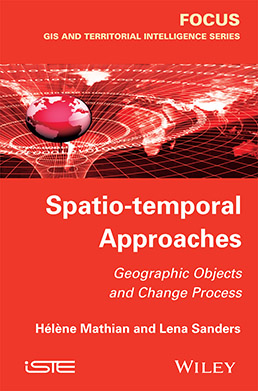
Spatio-temporal Approaches presents a constructed set of concepts, methods and approaches to represent and understand the evolution of social and environmental phenomena within space. It relies on applications concerning not only human geography, but also environmental geography and archeology (which enables us to explore questions regarding various temporalities) in order to test the genericity of the proposed approaches, and also tackles social and environmental phenomena.
Chapter 1 is devoted to the design and construction of objects, attributes, relationships and processes that are associated with the problems raised.
Chapter 2 is dedicated to the often delicate transition between the thematic questions formulated by the researcher or practitioner, the adequate methods to answer them and the observable entities available.
Chapters 3 and 4 address the practices developed to present and understand the change of spatial systems, both at the level of the elementary entities that constitute them and at that of the systems-entities themselves.
1. Building Objects in Time.
2. From Empirical Questioning to Spatio-Temporal Modeling.
3. Analyzing Spatio-Temporal Data: Empirical and Statistical Approaches.
4. Exploring the Underlying Processes of Change: Simulation Models.
Hélène Mathian is a research engineer at CNRS in Lyon, France. Her main research interests include spatial analysis, particularly concepts and methods for studying change and movement in space.
Lena Sanders is a senior researcher at CNRS in Paris, France. Her main research interests include modeling spatial systems’ dynamics and studying conceptual transfers between disciplines.